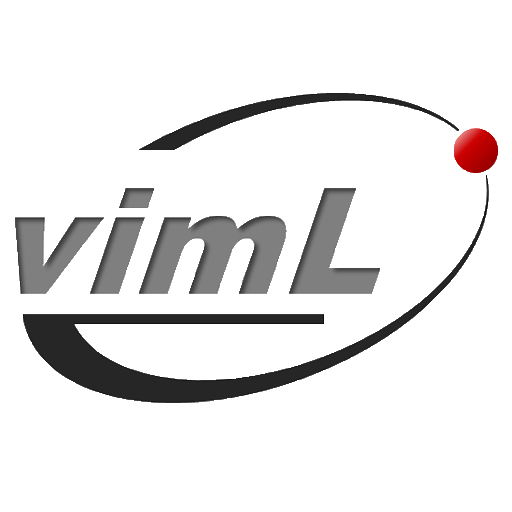在前面 part.1 的部分,已經先做了一些簡單的介紹;接下來,開始看程式碼吧∼這一部分,主要是看 volumeRender.cu 中 main function,並大概講一下 volume data 的前置處理。
在 main() 函式裡,主要分成幾個部分:
- 透過 cutil 來處理執行時的參數。
- 讀取 volume data,並初始化 volume 資料
- 設定 glut 環境
- 起始設定 pixel buffer object
- 執行 glut 的 main loop
第一部分主要就是透過 cutil 的 cutGetCmdLineArgumenti() 這個函式,來處理 main() 的 argc 以及 argv。而這個程式是設計成可以指定檔案的檔名以及大小,例如:「-file=brain.raw -xsize=512 -ysize=512 -zsize=125」就是指定檔名為 brain.raw,x, y, z 三軸的大小依序為 512, 512, 125。
而第二部分則是先透過 cutFindFilePath() 去找出檔案完整的路徑,然後再透過 loadRawFile() 來讀取 RAW 資料成為一個 unsigned char 的陣列;這邊的 RAW 資料,原則上就是一張一張 2D 灰階圖組合成的單一檔案。接著,就是透過 initCuda(),來把讀取進來 uchar 陣列(本程式一開始就把 uchar 定義為 unsigned char,以下將以 uchar 沿用),轉換成 ray casting 需要的 3D Texture 了∼
(由於他是使用 cudaArray 來 bind 到 3D texture,所以建議可以先參考看看之前寫的《CUDA Texture Part.1 簡介》)
接下來,就是直接看 initCuda() 這個函式了∼這個函式裡做的事,主要包含了兩部分:
- 建立 volume 資料本身的 3D texture
- 建立將 volume 資料的灰階,對應到彩色的 transfer function,以及他的 1D texture
將 volume data 建立成 3D texture 的程式如下:
// create 3D array
cudaChannelFormatDesc channelDesc = cudaCreateChannelDesc<uchar>();
CUDA_SAFE_CALL( cudaMalloc3DArray(&d_volumeArray, &channelDesc, volumeSize) );
// The sample does not work with pageable memory
// This is a known issue for beta that will be fixed for the public release
#define USE_PAGE_LOCKED_MEMORY 1
#if USE_PAGE_LOCKED_MEMORY
// copy to page-locked mem
cudaPitchedPtr pagelockedPtr;
pagelockedPtr.pitch = volumeSize.width*sizeof(uchar);
pagelockedPtr.xsize = volumeSize.width;
pagelockedPtr.ysize = volumeSize.height;
size_t size = volumeSize.width*volumeSize.height*volumeSize.depth*sizeof(uchar);
CUDA_SAFE_CALL( cudaMallocHost(&(pagelockedPtr.ptr), size) );
memcpy(pagelockedPtr.ptr, h_volume, size);
#endif
// copy data to 3D array
cudaMemcpy3DParms copyParams = {0};
#if USE_PAGE_LOCKED_MEMORY
copyParams.srcPtr = pagelockedPtr;
#else
copyParams.srcPtr = make_cudaPitchedPtr((void*)h_volume,
volumeSize.width*sizeof(uchar), volumeSize.width, volumeSize.height);
#endif
copyParams.dstArray = d_volumeArray;
copyParams.extent = volumeSize;
copyParams.kind = cudaMemcpyHostToDevice;
CUDA_SAFE_CALL( cudaMemcpy3D(&copyParams) );
// set texture parameters
tex.normalized = true; // access with normalized texture coordinates
tex.filterMode = cudaFilterModeLinear; // linear interpolation
tex.addressMode[0] = cudaAddressModeClamp; // wrap texture coordinates
tex.addressMode[1] = cudaAddressModeClamp;
// bind array to 3D texture
CUDA_SAFE_CALL(cudaBindTextureToArray(tex, d_volumeArray, channelDesc));
在這邊,讀進來的資料是 h_volume,他是一個 uchar 的陣列。而和 2D CUDA Array 時一樣,先透過一個 cudaChannelFormatDesc 來描述 cudaArray 的資料型別,然後再透過 cudaMalloc3DArray() 來建立一個大小為 volumeSize 的 3D cudaArray:d_volumeArray。
不過,在註解裡有寫,目前的 2.0 beta 版,還不能直接把一般的記憶體空間的資料,直接複製到 3D 的 cudaArray 裡;必須要先透過 cudaMallocHost() 宣告一個 page lock 的記憶體空間,並把 h_volume 的資料複製到這個 page lock 的變數 pagelockedPtr。然後再設定 cudaMemcpy3DParms,把資料用 cudaMemcpy3D() 複製到 d_volumeArray。比起來,是多了一個先轉成 page lock 變數的過程,不過這個問題在正式版發佈時,應該是會解決的掉的。
而把資料複製到 cudaArray 後,就是設定一下 3D texture 的參數,然後再透過 cudaBindTextureToArray(),把 cudaArray d_volumeArray bind 到 texture<uchar, 3, cudaReadModeNormalizedFloat> tex 了。
而在把 Volume 資料本身處裡完了之後,接下來還有一份額外的陣列。由於在醫學的 volume rendering 中,CT、MRI 這些資料都是灰階的;如果要用彩色來呈現、凸顯某些部位的話,大部分都是用一個 transfer function 來做色彩的對應。
在 initCuda() 這個函式中的後段,就是在處理這份資料。
// create transfer function texture
float4 transferFunc[] = {
{ 0.0, 0.0, 0.0, 0.0, },
{ 1.0, 0.0, 0.0, 1.0, },
{ 1.0, 0.5, 0.0, 1.0, },
{ 1.0, 1.0, 0.0, 1.0, },
{ 0.0, 1.0, 0.0, 1.0, },
{ 0.0, 1.0, 1.0, 1.0, },
{ 0.0, 0.0, 1.0, 1.0, },
{ 1.0, 0.0, 1.0, 1.0, },
{ 0.0, 0.0, 0.0, 0.0, },
};
cudaChannelFormatDesc channelDesc2 = cudaCreateChannelDesc<float4>();
cudaArray* d_transferFuncArray;
CUDA_SAFE_CALL(cudaMallocArray(
&d_transferFuncArray, &channelDesc2, sizeof(transferFunc)/sizeof(float4), 1));
CUDA_SAFE_CALL(cudaMemcpyToArray(
d_transferFuncArray, 0, 0, transferFunc, sizeof(transferFunc), cudaMemcpyHostToDevice));
transferTex.filterMode = cudaFilterModeLinear;
transferTex.normalized = true; // access with normalized texture coordinates
transferTex.addressMode[0] = cudaAddressModeClamp; // wrap texture coordinates
// Bind the array to the texture
CUDA_SAFE_CALL( cudaBindTextureToArray( transferTex, d_transferFuncArray, channelDesc2));
在這個範例中,他是先宣告一個 float4 的陣列 transferFunc,裡面算是有九個控制點,分別代表灰階值不同所要呈現的階段顏色(介於中間的值,會透過 texture 用線性內插來算)。而這邊他就是用一般的 1D cudaArray 來做,也就不多加介紹了;最後會拿來用的,就是已經 bind 好資料的 texture<float4, 1, cudaReadModeElementType> transferTex。
再來的第三部分,則是透過 glut 來建立 OpenGL 的環境。
// initialize GLUT callback functions
glutInit(&argc, argv);
glutInitDisplayMode(GLUT_RGB | GLUT_DOUBLE);
glutInitWindowSize(width, height);
glutCreateWindow("CUDA volume rendering");
glutDisplayFunc(display);
glutKeyboardFunc(keyboard);
glutMouseFunc(mouse);
glutMotionFunc(motion);
glutReshapeFunc(reshape);
glutIdleFunc(idle);
glewInit();
if (!glewIsSupported("GL_VERSION_2_0 GL_ARB_pixel_buffer_object")) {
fprintf(stderr, "Required OpenGL extensions missing.");
exit(-1);
}
前面兩行,是在起始化整個 OpenGL 的環境,而第三、四行則是在建立一個 width * height,標題為「CUDA volume rendering」的視窗。而之後的 glut*Func() 則是在設定不同的 callback function。而之後,則是做 glew 的起始化,並確認目前的 OpenGL 環境,是否有支援必要的 pixel buffer object。
而第四部分,就是在 initPixelBuffer() 這個函式中,建立用來當輸出結果的 pixel buffer object。
if (pbo) {
// delete old buffer
CUDA_SAFE_CALL(cudaGLUnregisterBufferObject(pbo));
glDeleteBuffersARB(1, &pbo);
}
// create pixel buffer object for display
glGenBuffersARB(1, &pbo);
glBindBufferARB(GL_PIXEL_UNPACK_BUFFER_ARB, pbo);
glBufferDataARB(GL_PIXEL_UNPACK_BUFFER_ARB, width*height*sizeof(GLubyte)*4, 0, GL_STREAM_DRAW_ARB);
glBindBufferARB(GL_PIXEL_UNPACK_BUFFER_ARB, 0);
CUDA_SAFE_CALL(cudaGLRegisterBufferObject(pbo));
// calculate new grid size
gridSize = dim3(iDivUp(width, blockSize.x), iDivUp(height, blockSize.y));
第一段的 if 是判斷 pbo 這個 buffer object(型別是 GLuint)是否已經被建立,如果有的話,就先把現有的刪除掉。而第二段就是透過 OpenGL 的函式,來建立大小為 width * height,每一點的資料是 4 個 GLubyte 的一塊 GL_PIXEL_UNPACK_BUFFER_ARB 了∼
而在 CUDA 的部分,則是需要透過 cudaGLRegisterBufferObject() 這個函式來註冊 pbo 這個 buffer object;如此,之後才能在 kernel 程式中存取透過 cudaGLMapBufferObject() 所取得的記憶體位址。
當使用完後,如果在 if 的區段中所做,除了必須要透過 OpenGL 的 glDeleteBuffersARB() 來把 buffer object 刪除外,在之前也需要使用 cudaGLUnegisterBufferObject() 來取消這份 buffer object 的註冊。
而在 main() 中最後的 glutMainLoop(),就是開始執行 OpenGL 的 main loop;之後,要顯示內容、控制程式,就是要靠之前設定的 callback function 囉∼
原始發表:Part.2 程式流程
